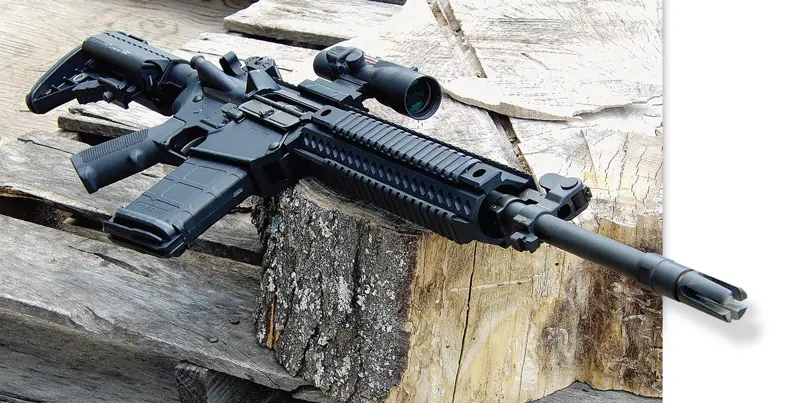
One of the best things that’s happened in tactical rifles in a long time is the number of high-quality ARtype rifles available in .308 caliber. Certainly for combat usage, the .308 Winchester/7.62x51mm NATO round offers better range and striking power than the 5.56x45mm. An AR chambered in .308 also offers a much better choice to a hunter who likes the idea of a battle rifle he can use for hunting.
I can also see an argument for arming fish and wildlife agents with a .308 AR, as it would allow them to perform their function of putting down wounded beasts with a heavier rifle that also would excel at their law enforcement tasks.
In their 901 Modular Carbine, Colt now offers a very desirable .308 rifle that will perform very well as a heavier AR. However, it is the modular part that makes the 901 especially interesting.
In less than a minute, the 901 can be converted from .308 caliber to .223 caliber. I think this is a clever concept— especially the way Colt realized it—but I also took some time to think about whether it is all that useful.
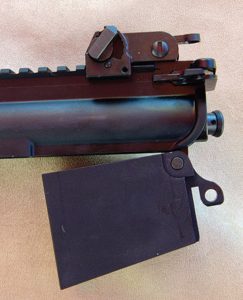
Table of Contents
HOW USEFUL IS IT?
First, from the view of the private citizen, it would allow the shooter who wanted one AR to have one that he could shoot in either of two calibers. That would allow the use of whichever ammo was available at the least expense for practice. It might also allow the use of the carbine for home defense in .223/5.56x45mm.
For law enforcement purposes, the 5.56x45mm chambering is generally far more popular than the 7.62x51mm chambering. For patrol use, the 5.56 round probably makes more sense. Officers can handle it better and it should perform most missions likely to arise for patrol officers. In active shooter situations, engagement will normally be at fairly close ranges, so the 5.56 round should suffice.
However, there is the possibility of having to suppress an urban or suburban sniper until tactical officers arrive. The range, penetration, and striking power of the 7.62 round offers a real advantage. Officers with proven ability to shoot a 7.62 carbine well could be equipped with a 7.62 AR with more effective long-range optics.
Anyone with much law enforcement experience is likely now thinking, agencies are not going to want carbines of two different calibers. I agree that would be the typical view. But bear in mind that the Colt Modular Carbine operates in the same manner as a standard AR.
One other possibility occurred to me. For more skilled shooters, the Modular Carbine could be used with the .223 conversion for patrol, but the .308 upper could be carried along with mags and ammo for use in the countersniper or other role. That’s still complicated, but it might work for some smaller agencies.
I am a believer in self-loading countersniper rifles or carbines when dealing with large numbers of hostages and shooters. Many tactical units will only have a couple of tactical marksmen with bolt-action rifles. A few more with precision self-loading carbines and good optics could supplement them in an emergency. Most agencies will not want a convertible rifle, but it is an option. Another is to just use the 901 in its standard .308 guise.
901 FEATURES
I stated that the 901 functions virtually the same as a standard M4/AR-15, but there are a couple of minor differences. For one, it has an ambidextrous bolt release, and it is a good one. Most of you reading this have probably been trained as I have, to hit the bolt release on the left side of an M4 with the bottom of the palm to release the bolt. This may still be done with the 901. However, above the trigger guard is an easily operated bolt release lever that is very fast to operate.
There are also well-designed ambidextrous mag releases. In addition to the standard button on the right side, on the left/support side is a lever with a button well located to hit with the thumb as the left hand strips the magazine. I consider these real pluses when carrying out a tactical reload.
The 901 does not have an ambidextrous safety. To me this is another positive, as I have found many ambidextrous safeties get in the way of the trigger finger.
Other features include a quad rail. I like quad rails even when I don’t attach many accessories, as the quad gives me options. Unlike many rifles or carbines with quad rails, the Colt comes with rail covers too. Kudos to Colt for that.
The rifle also comes with quick-detach swivels that mount into slots in the rails or stock. QD swivels are good if you want to take your sling on and off readily. Swivels and sling are especially useful on the heavier 901.
To help carry the weight of the Modular Carbine and allow quick transition, I chose the Viking Tactics Standard sling, which has the great tactical advantage of being simple enough that I can figure out how to use it without having to watch a video every time I pick up the carbine!
Among other features standard on the 901 are a four-prong flash hider, bayonet lug, Magpul collapsible stock with good recoil pad and battery compartments, Magpul PMAGs, and very useful folding BUIS.
CONVERSION PROCESS
The conversion from .308 to .223 requires a .223 upper along with its bolt and bolt carrier, and a magazine. It also requires the conversion components that come with the 901. These consist of a recoil buffer, recoil spring, and special conversion insert for the magazine well.
The magazine insert is very clever, as it not only has to adapt the carbine to take an M4 magazine, but also so that the upper can fit on what is a longer mag well.
To install the components, the two pins retaining the .308 upper are removed and the upper lifted off. The recoil bushing and spring are then swapped out for those for the .223 round. At that point, the mag well adapter may be attached to the upper with its own captive pin. Once in place, it slips into the mag well and extends the mounting hole for the forward portion of the upper. The pins are pushed back into place, an AR-15 magazine is inserted, and you are ready to fire the lower caliber.
The first time I did the conversion, it took me about five minutes because I was examining the pieces to see how everything worked. The second time, I was down to a couple of minutes. Taking care to control the recoil buffer and spring while changing added the most time.
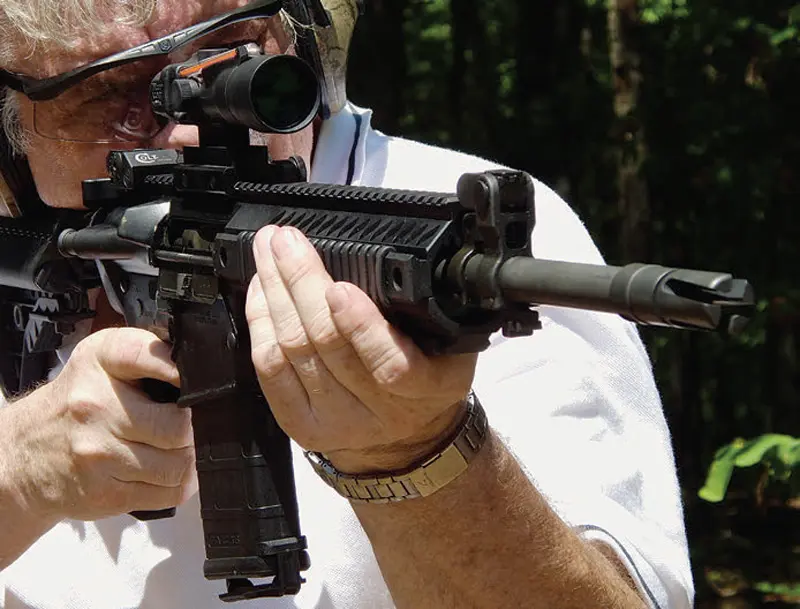
RANGE TESTING
When I was ready to range test the 901, I chose the Trijicon TA33R-9, which uses the same chevron reticle that’s on the USMC RCO I have on the 5.56mm M4 I use most often and carry in my truck. The TA33R-9 is designed for the 7.62x51mm NATO round, so it was a perfect choice.
The trade-off for it being compact— 6.1 inches overall and 12.6 ounces with flat-top mount—is that it is only 3X. But I get the reticle I like and I’m accustomed to using the stadia lines for shooting at longer distances. And it has a fiber-optic tube that helps adjust illumination of the reticle outside to suit the amount of ambient light, as well as tritium insert for complete darkness.
I decided to do most of my shooting with the .308 upper in place because I plan to use the carbine in this caliber, as will many reading this. I also decided a good test would be to try a few different kinds of ammo. Since I test a lot of .308 rifles, I had partial boxes of half a dozen loads to shoot up.
I also took along some boxes of CAVIM Venezuelan surplus, which I often use for testing reliability in .308 battle rifles, and some Black Hills 168-grain Match ammo. Since I know the Black Hills loads are extremely accurate, I used them to zero the ACOG at 100 meters. Then I shot other groups at 100 meters with Federal 168-grain Match, PMC 180-grain SPBT, and PMC ELDORADO 150-grain XHP. Many shooters have found that on the CAVIM, the sealer used on these rounds can gum up some actions, but since I use it to test reliability, that is not necessarily a bad thing.
RESULTS
I’ve fired over 200 rounds of various .308/7.62x51mm loads through the Colt 901 and all have functioned 100%. I squirted a little bit of lube on the bolt after about 100 rounds, but that was it. Accuracy was best with the Federal and Black Hills Match ammo, as might be expected. The best groups were around an inch at 100 meters. With the PMC, the best groups were more like 1.5 to 2 inches.
I shot at plates at 100 and 200 meters and found the 901 handled very quickly. Since I’m used to the ACOG chevron reticle, I could move quickly among targets. Weight of the 901 without optical sight is 9.4 pounds. That’s a couple of pounds heavier than the Colt LESOCOM 5.56x45mm carbine I shoot, but the 901 balances well and the Viking Tactics sling helps distribute the weight. I also found the bolt release lever being located for operation by my trigger finger speeded reloads, as did the mag release available to my support hand.
I carried out the conversion to see how it worked, but only fired 60 rounds through it to make sure it functioned reliably with the 5.56 upper in place. It did.
I really like the Colt 901 Modular Carbine as a .308 battle rifle. The ability to convert to .223 is a nice feature, but as noted, I plan to use the carbine in .308. In the case of the 901, once again the rampant Colt is a sign of a welldesigned carbine.
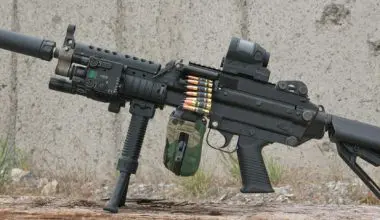
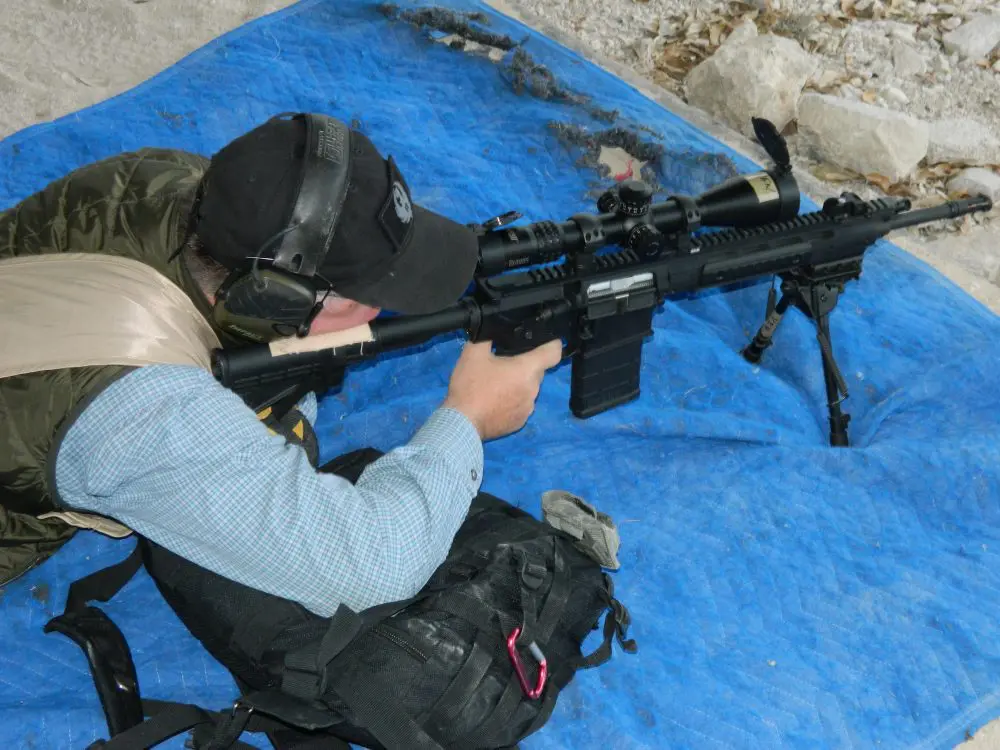

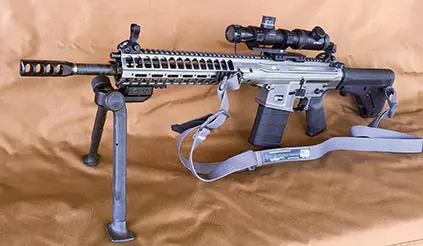
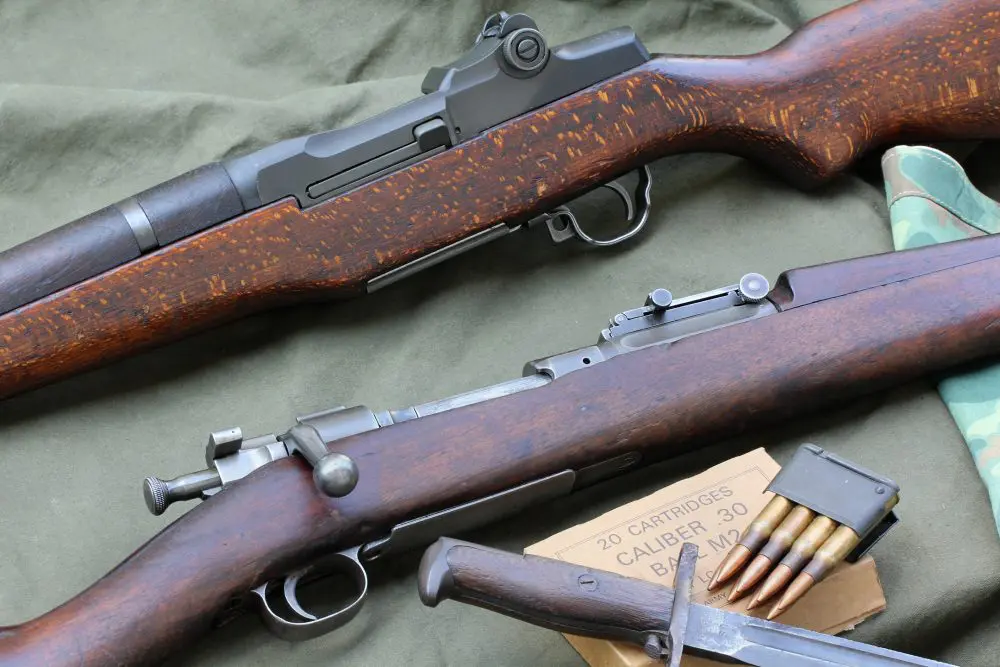
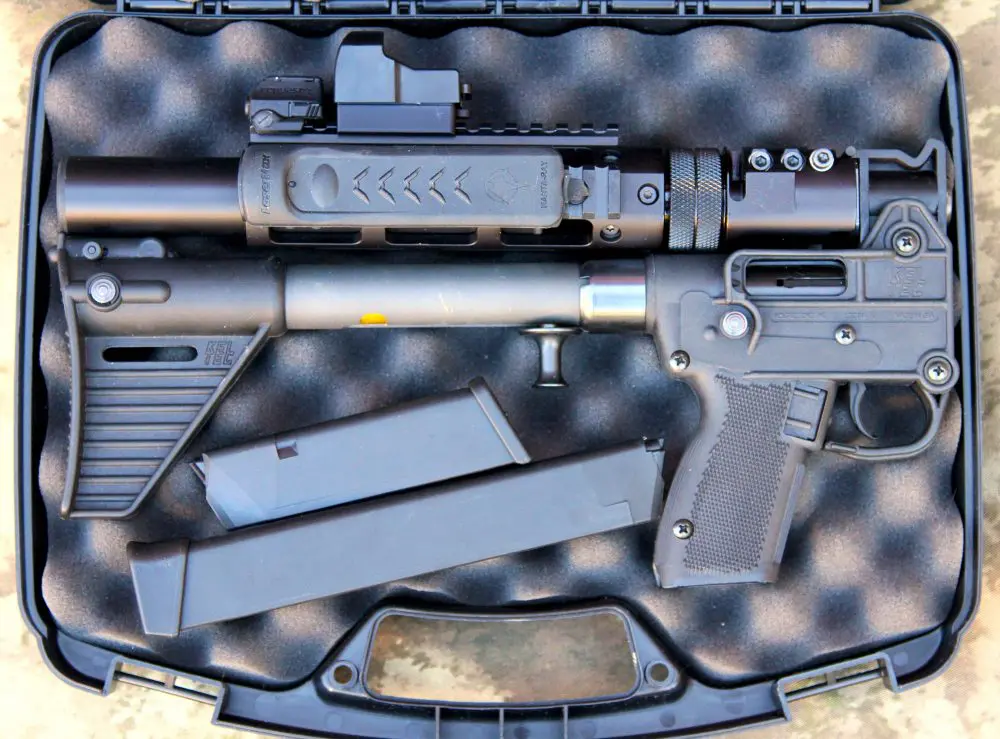
1 comment